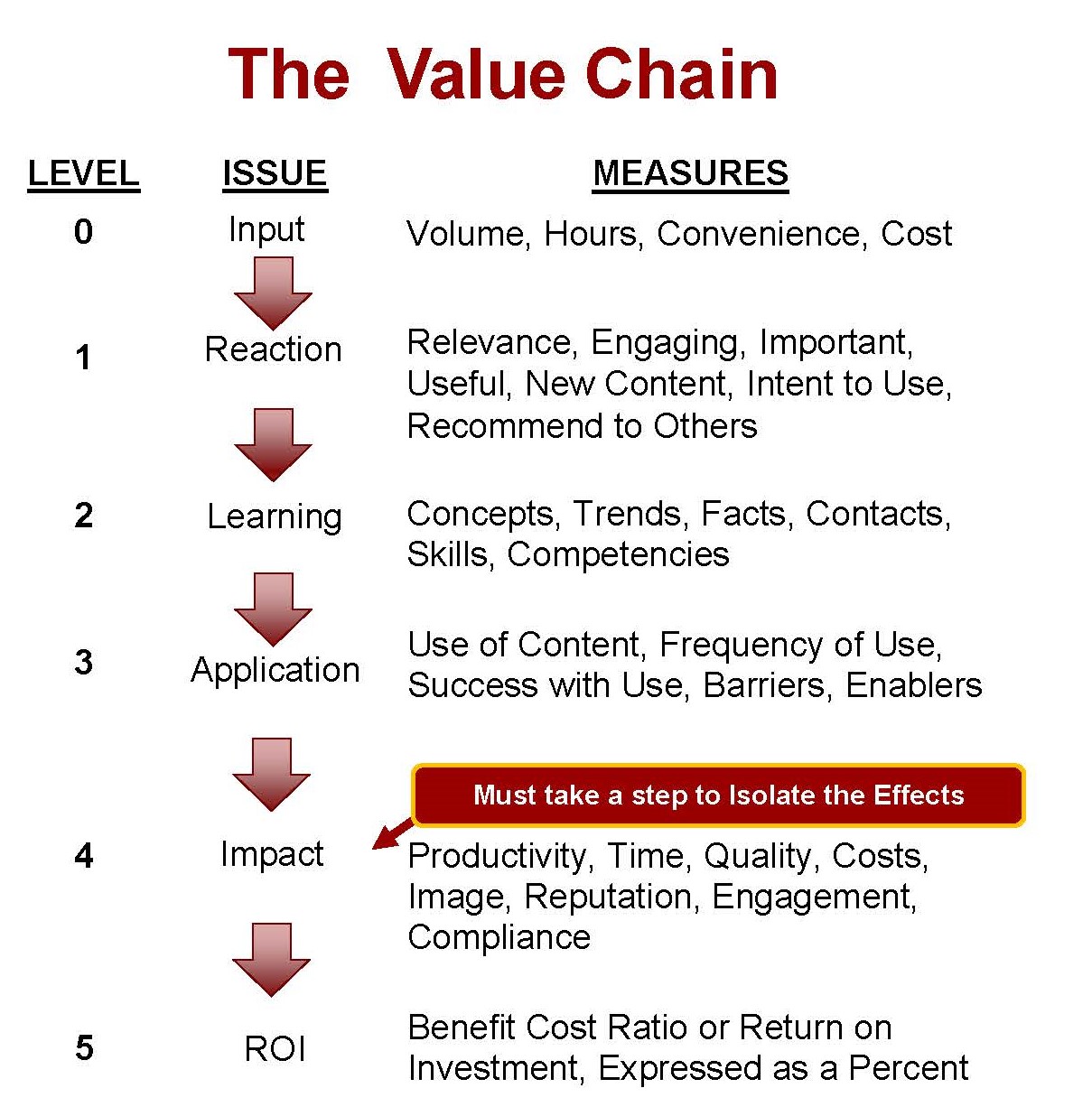Your cart is currently empty!
Virtual learning after the pandemic
By Patti P. Phillips, Ph.D., and Jack J. Phillips, Ph.D.
This article was originally published on September 23, 2021, on ChiefLearningOfficer.com.
There are many forecasts regarding the extent of virtual learning that organizations will offer after the pandemic. Many agree that virtual learning as a fraction of all learning and development programs will increase from pre-pandemic levels. The unknown factor is — how much?
Supporters of virtual learning predict that nearly all learning in the future will continue to be virtual. The dissenters say there will be little movement from the virtual learning offered in 2019. Who is right? Though we don’t know the outcome yet, this is a measure largely under the control of the L&D community.
This path is not new
We have been down this path before. As some of you may recall, during the 2008-2009 financial crisis, much of learning was halted because that’s what organizations do in a recession. Travel was stopped, learning budgets were slashed and many learning functions survived by quickly flipping as much content as possible into an e-learning format.
Executives thought that was a great idea. They could run all the learning programs without the travel and facilitator costs. Life was good until they realized that virtual learning was not delivering the value that was needed. At least for most programs, there was no apparent business connection. Because of this, executives requested we return to in-person learning. Will this same situation repeat as we emerge from the pandemic? We don’t think so, and for several reasons:
- We are much better at virtual learning now than we were in 2008 and 2009.
- The pandemic lasted a long time and gave us a chance to have more experience with virtual learning on a large scale.
- Technology has improved significantly in the last decade.
- We think the executives will expect a large part of the learning to continue in a virtual format.
The key to all this lies in how virtual learning is designed, developed, implemented and measured. An approach that focuses on designing for results will make virtual learning the dominant way of learning in the future. Virtual learning has a questionable image now and a reputation for not delivering results at the application and impact level.
Quick review of the basics
It is helpful to quickly review the value from any virtual learning program. Figure 1 shows the value chain, which shows how value is generated from a virtual program. This model forms the basis for most evaluation systems and originated in the 1800s.
Figure 1. The Value Chain

Few would dispute the rationale behind this model. It presents a logical flow of data with one step as a prerequisite for the next, and there is a connection between the steps. This framework is essential for understanding success. Success depends on whose ROI you are interested in.
The current status of L&D success
The challenging issue in L&D is the accountability for showing value. Senior administrators and executives want to see learning connected to the impact. While reactions and learning are important, application and impact are what matter most. The impact describes “why” you are implementing the program.
Over time, we have collected data at the beginning of conference presentations and webinars by asking our audiences for levels of agreement with four critical statements. L&D professionals have provided some very candid answers, particularly when providing this data anonymously. We asked participants if the statement is mostly true or mostly false. Here are the results.
| Statement | Results |
| Learning Waste
Most learning is wasted (not used) after the program is conducted. |
78% of respondents said this is true. |
| Are We Measuring the Right Thing?
The learning outcome desired by executives is rarely measured in organizations. |
89% of respondents said this was true. |
| Do We Make a Difference?
Most learning providers do not have data that shows they make a difference in the organization. |
81% of respondents said this was true. |
| Is L&D a Cost or an Investment?
Most executives see learning as a cost and not an investment. |
93% of respondents answered true. |
N=955
These candid statements from L&D managers are both surprising and disappointing. It explains why so much of learning is viewed as a necessary evil and not a business driver. It also explains why learning budgets are often the first to be cut when there is a recession. These challenges for the L&D industry are magnified with the virtual learning format. Let’s examine this next.
Why virtual learning fails
As we’ve seen in our survey results, along with additional anecdotal evidence, attempting to measure the success of virtual learning has not been as effective as measuring it for in-person learning. There are four main reasons why virtual learning may fail to deliver the results. They are as follows.
Missing manager support. Based on all the literature and work in the learning transfer field, the most critical influencer for a participant after they have completed a learning program is their manager. If the manager supports the learning, it will be applied as a general rule. However, if the manager doesn’t support the learning, it won’t be applied. This influential person must be involved in some way in the learning process.
Manager involvement is more likely to happen during an in-person program. The manager needs to follow up with participants when they complete the program. During in-person learning, follow-up conversations are more likely to take place, but in some cases, a manager may not even be aware that a learner is participating in a virtual program.
Many programs are designed only for learning, not impact. Developers and designers usually think their work is complete when learning occurs. Their focus is on making sure that the participants have learned the knowledge and skills necessary to be successful. After all, when a participant leaves the program, they are in their workspace, and there is no more control over this individual, or so it seems.
Learning is necessary, but it’s not enough. Just because there is learning does not mean there will be application. Figure 2 presents 30 techniques to design for application and impact to ensure that success occurs at these levels.
Figure 2. Thirty Techniques to Design for Application and Impact
Actions Before the Program
Actions During the Program
Technology-Enabled Actions
Actions After the Program
For more information, contact ROI Institute. |
Multitasking. The most commonly cited challenge of virtual learning is that participants aren’t paying attention. They hide behind their screens, paying only half-attention to the virtual class. Though learning providers, expert designers and skilled facilitators have tackled this issue feverishly, rampant multitasking remains a huge challenge. We know from the research that multitasking inhibits learning. In fact, it is challenging to have serious learning in any form of multitasking format.1 The chain of value clearly shows if learning is inhibited, application is also inhibited. If application is inhibited, impact is inhibited. And if impact is inhibited, the ROI will be negative.
Massive technology challenges. Obviously, virtual learning breaks down when technology fails or gets in the way. This may be due to poor internet connectivity, using less-than-desirable software platforms, lack of necessary equipment or any number of other technology factors. For example, a participant cannot effectively learn if they are uncomfortable with technology, struggling to reconnect to the virtual platform, or if the facilitator’s audio is choppy and the virtual class activities don’t function. In short, if learning is inhibited, impact is inhibited.
Why action is needed. Now.
With a sense of urgency, we need to make sure virtual learning delivers results for those who support it, expect it and even demand it. It can be done, it is being done and it should be done.
Virtual learning has a bad image. Because of the challenges presented alongside it, virtual learning has a bad image with many people, making it even more difficult to overcome the desire to opt for an in-person learning format. That amps up the pressure on L&D professionals to show the value of virtual learning. If those involved see that virtual learning does work, they will support it, encourage it and recommend it to others. One success will lead to another. We need to make an extra effort to show results while also overcoming concerns associated with virtual learning.
Virtual learning must remain a significant component. While it’s hard to know exactly how much learning will remain in a virtual format going forward, most people conclude that it will be a significant amount. In 2019, approximately 14 percent of all formal learning took place in the virtual classroom. During the pandemic, this number skyrocketed to almost 100 percent. As the pandemic wanes and people return to in-person classes, we expect a large percentage of learning programs to remain virtual.
It will, if the results are there. Those who support, fund and sponsor virtual learning will want to see results beyond what is typically presented now. If the results are there, virtual learning will grow and develop and mature into a business driving process.
Don’t wait for the request. The worst thing an L&D professional can do is to wait for executives to ask for the results from virtual learning. We need results now at Level 3, Level 4 and even Level 5. Be proactive. It gives you time to develop capability, gain experience with the process and be successful without the pressure of a short timeline or the pressure of defending your program. With a proactive approach, you keep impact and ROI on your agenda and not on someone else’s.
References:
- Zack, Devora. Singletasking: Get More Done – One Thing at a Time. Oakland, CA: Berrett-Koehler, 2015.


























